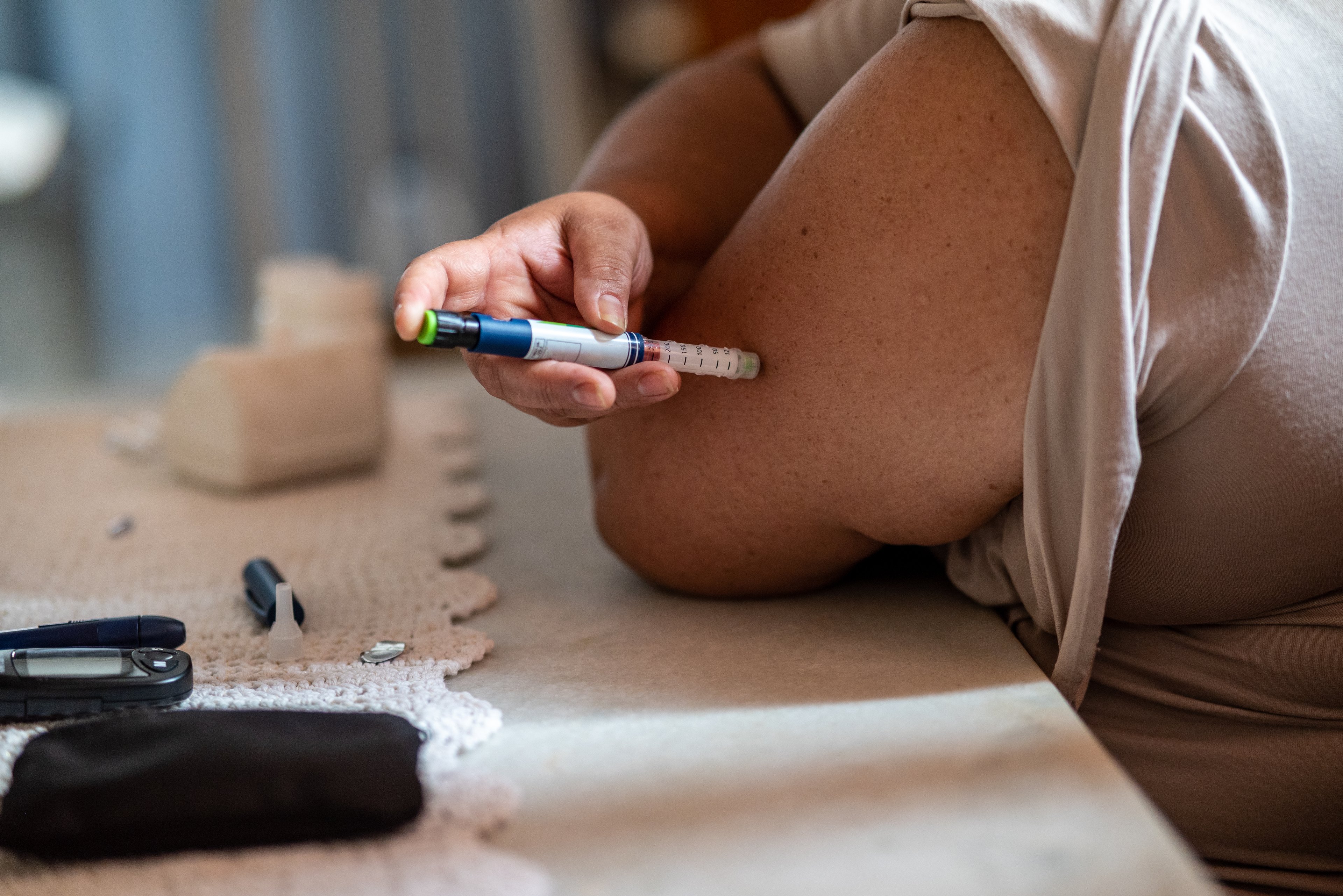Novo Nordisk (NVO +0.35%) continues to see slow overall growth with two counteracting forces: the expansion of its next-generation diabetes drugs, tempered by lower prices for its legacy insulin products.
Novo Nordisk results: The raw numbers
|
Metric |
Q3 2018 |
Q3 2017 |
Year-Over-Year Growth (Decline) |
|---|---|---|---|
|
Revenue |
27.8 billion DKK |
26.6 billion DKK |
4.3% |
|
Income from operations |
11.8 billion DKK |
12.0 billion DKK |
(1.9%) |
|
Earnings per share |
3.74 DKK |
3.96 DKK |
(6.2%) |
Data source: Novo Nordisk. $1 = 6.53 Danish kroner (DKK) as of Nov. 8.
What happened with Novo Nordisk this quarter?
- In local currencies, sales would have been up 5% year over year.
- Sales of diabetes drug Victoza were up 14% in local currencies.
- The launch of Ozempic, which is in the same drug class as Victoza but only has to be dosed weekly, is off to a good start in its first seven countries: the U.S., Canada, and five European countries. Combined sales of the class were up 25% in local currencies.
- Sales of Saxenda, which is the weight-loss version of Victoza, jumped 58% in local currencies.
- On the downside, sales of long-acting insulins were up only 2% year over year, and short-acting insulins dropped 9% year over year, both in local currencies.
- The oral version of Ozempic continues to work its way through its clinical trials, reporting three more successful phase 3a trials for a total of eight positive trials. Two more studies are expected by the end of the year, and then Novo Nordisk can file marketing applications in various countries.
- In August 2018, Novo Nordisk acquired Ziylo, which is developing molecules that selectivity bind to glucose in the hopes of developing a glucose-responsive insulin.

Image source: Getty Images.
What management had to say
Eli Lilly (LLY 0.47%) has a drug in the same class as Victoza and Saxenda, and, like Novo, Eli Lilly is working on follow-on molecules, but Novo CEO Lars Fruergaard Jorgensen doesn't seem worried:
I think what drives the value of the segment is continued innovation and we have seen that until now that for each and every time we have seen a new launch of efficacious GLP-1 agent, we have seen a larger market growth. So the overall value of the market will be benefiting from two companies competing with similar tactics, and say the short- to medium-term tactics are still in favor of Nordisk. And then we are quite confident that we can also, in terms of our next-generation product, do something that's competitive vis-a-vis Lilly.
Novo also has a next-next-generation molecule in the class, dubbed 2023, which is an oral version, with higher efficiency, so it could be used in other diseases such as nonalcoholic steatohepatitis (NASH), as Novo's chief scientific officer Mads Krogsgaard Thomsen explained:
So what analogue 2023 enables is one of two things: either higher efficacy, implying that it could be developed for obesity, could be developed for NASH, could be developed for high efficacy in type 2 diabetes; or you can match oral sema as we know today, and that would lead to a reduction in the cost of goods sold. And all of that we'll know a lot more about next spring when we report the data both from this trial and from the second-generation oral semaglutide tablet formulation. They're reporting approximately at the same time.
Looking forward
Management increased its 2018 guidance for revenue growth to a range of 4% to 5% in local currencies, although it kept guidance for operating profit intact with an expected increase of 2% to 5% in local currencies.
Looking further ahead, it'll continue to be a balancing act with Ozempic (and eventually the oral version of the drug) driving sales, while Novo Nordisk tries to keep sales of older medications from slipping. Management noted that it doesn't expect much next year in the way of changes in access -- insurers playing hardball refusing to cover the drugs because Novo won't compete on price -- but that could be because Novo Nordisk made price concessions, so revenue will go down even if volumes remain constant.







